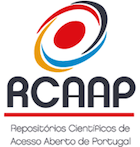Importance of postprandial hyperglicemia to controlling diabetes
Keywords:
diabetes, fasting glycaemia, postprandial glycaemia, haemoglobin HbA1c, vascular consequences of diabetes, diabetic neuropathyAbstract
Many studies have demonstrated a strong relationship between
postprandial hyperglycaemia and the development and progression of diabetes related macrovascular diseases, retinopathy,
nephropathy and neuropathy. Therefore, therapies targeting
elevated after meals glucose seem to be beneficial, although
this has not yet been confirmed by randomized controlled trials.
The International Diabetes Federation recommends the following
goals for the diabetes clinical management: HbA1c < 6.5 %,
before meals (fasting) glycaemia 5.5 mmol/l (< 100 mg/dl), and
2-hour after meal glycaemia 7.8 mmol/l (<140 mg/dl). This short
communication examines all these aspects.
Downloads
References
IDF. Guideline for Management of Postmeal Glucose. Brussels: International Diabetes Federation, 2007. Available at http://www.idf.org Accessed 10 February 2010.
International Diabetes Federation. Diabetes Atlas. 3rd edn. Brussels: International Diabetes Federation, 2006. Available at http://www.eatlas.idf.org/media Accessed 11 February 2010.
Ceriello A, Colagiuri S. Special Article. International Diabetes Federation guideline for management of postmeal glucose: a review of recommendations. Diabet Med 2008; 25: 1151-1156.
WHO. Definition and Diagnosis of Diabetes Mellitus and Intermediate Hyperglycemia. Report of a WHO/IDF Consultation. Geneva: World Health Organization, 2006. Available at http://www.who.int Accessed 20 February 2010.
Nathan DM, Davidson MB, DeFronzo RA, et al. Impaired fasting glucose and impaired glucose tolerance: implications for care. Diabetes Care 2007; 30: 753-759.
Willms B, Ruge D. Comparison of acarbose and metformin in patients with type 2 diabetes mellitus insufficiently controlled with diet and sulphonylureas: a randomized, placebo-controlled study. Diabet Med 1999; 16: 755-761.
Nauck MA, Vilsboll T, Gallwitz B, Garber A, Madsbad S. Incretin-based therapies: viewpoints on the way to consensus. Diabetes Care 2009; 32: S 223-S 231.
Verspohl EJ. Novel therapeutics for type 2 diabetes: incretin hormone mimetics (glucagon-like peptide-1 receptor agonists) and dipeptidyl peptidase-4 inhibitors. Pharmacol Ther 2009; 124: 113-138.
Acheson KJ. Carbohydrate for weight and metabolic control: where do we
stand? Nutrition 2010; 26: 141-145.
Elhayany A, Lustman A, Abel R, Attal-Singer J, Vinker S. A low carbohydrate Mediterranean diet improves cardiovascular risk factors and diabetes control among overweight patients with type 2 diabetes: a 1-year prospective randomized intervention study. Diabetes Obes Metab 2010; 12: 204-209.
de Mello VD, Laaksonen DE. Dietary fibers: current trends and health benefits in the metabolic syndrome and type 2 diabetes. Arq Bras Endocrinol Metabol 2009; 53: 509-518
Additional Files
Published
How to Cite
Issue
Section
License

This work is licensed under a Creative Commons Attribution 4.0 International License.
Copyright (c) 2023 Medicina Interna





